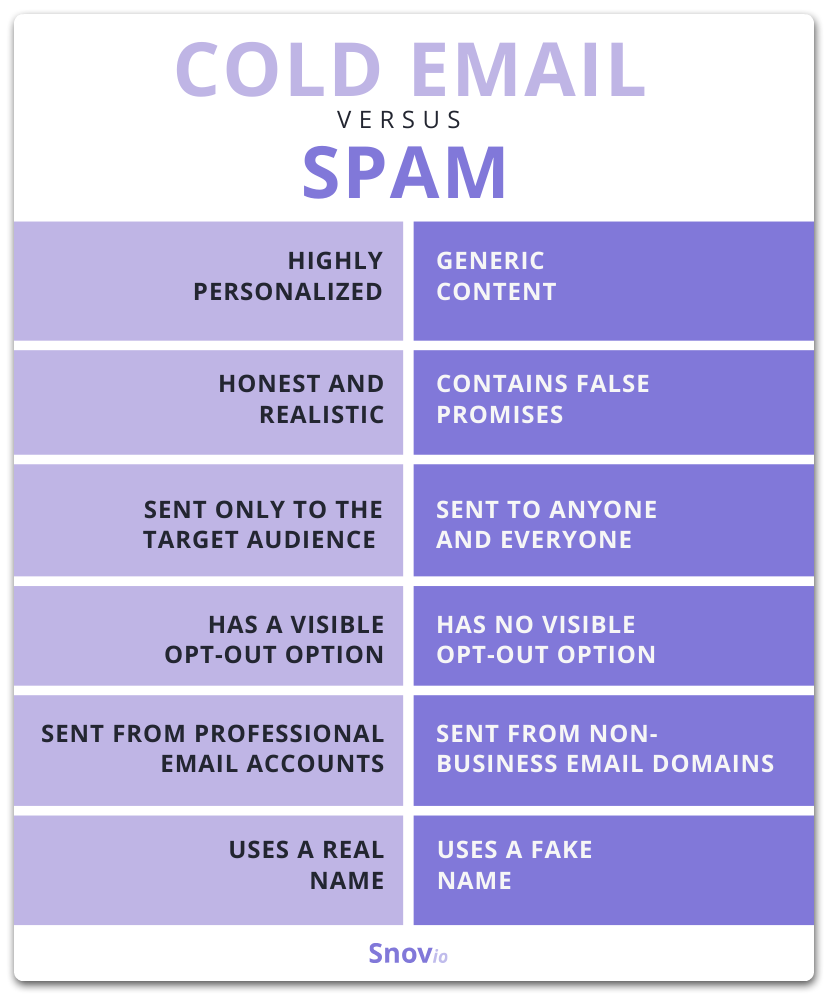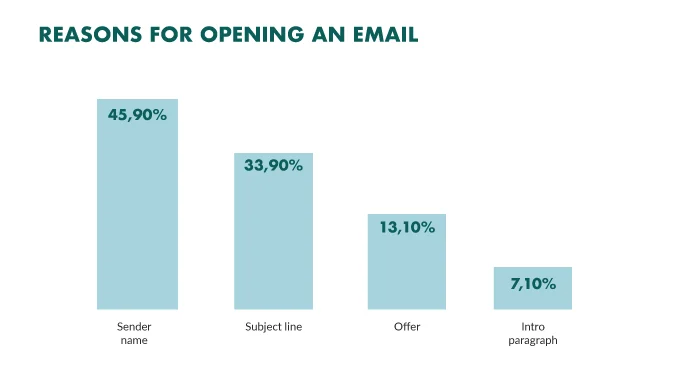
Table of Contents
- What is Cold Emailing?
- Why You Must Write Cold Emails
- How to Write a Cold Email Pitch
- Recommended Cold Email Templates
- Errors to Avoid While Writing a Cold Email
- Features of the Available Tools That Help You Write a Cold Email
- Key Takeaways
- Conclusion
- FAQs
Welcome to cold emailing 101. Here, you will find everything you need to know about cold emailing and how to write a cold email. From framing one to its execution, you will find some very handy tips and tricks as you scroll down this article. So, get ready to score more clients.

What is Cold Emailing?
So, before we get into the tips and tricks, let’s start with some basics. What is cold emailing after all? In simpler terms, a cold email is a preliminary email sent to a recipient with the hopes of gaining a benefit in the form of favour, sales, opportunity, or any other profit maximizing advantage. Such emails are sent to potential clients with whom you may not have any contact at all!
If you have ever sent an email to someone you’ve never met, you my friend, have already sent a cold email! But what you need to know now is how to shoot the ball through the hoop. An effective cold email has the following elements:
- It must look authentic and trustworthy.
- It must have a personal touch; hence it should include a name, contact details, and a job designation.
- It must make a request.
- It must be framed in a conversational tone. A plain cold email will never come through. For best results, always jump start with a conversation.
- It must give a strong sense of one on one interaction.
Hence, it’s imperative to put in some thought while writing a cold email. Because these will be sent to potential clients, they must have a certain pull to not appear like a spam email. One of the most problematic deductions about cold emails is calling them spam! A cold email is far from a spam email, given that it is written efficiently. The fundamental difference between a spam email and a cold email is that the latter has a personal touch to it. They are not just thrown at the client the way spam is.
A cold email runs on the following formula: Paying attention to the client + specific request + finding common contact.
It’s not aggressive or annoying, rather the opposite. The approach is friendly. However, a word of caution: Cold emails are tricky to write. Make them even a little generic, and they go into the spam section of an email. Also, there’s no real guarantee that they will hit the right spot. So, frame them with extra care.

Why You Must Write Cold Emails
Is cold emailing even relevant today? Does it even work the way it claims to? These are the questions and doubts that swarm around one’s mind when considering cold emailing.
The answer is yes. Cold email pitches work if a lot of thought and execution is put into them. From a business perspective, sales will expand because of these cold emails, as they will promote networking and generate viable leads. When you send a cold email to a prospective client with whom you have no contact whatsoever, you create awareness about your product or service. This leads to the expansion of your clientele and thus, boosts your sales. This is how networking works in cold emailing.
Lead generation includes the generation of leads to execute sales in the most efficient way possible. And cold emails assist with just that. It generates leads regarding what a salesperson must follow to spread the scope of his sales as far as possible. And once the lead comes your way, all you have to do is put your sharp sales acumen to use and work your magic!
In today’s digital age, speaking with someone to purchase a product or receive a benefit has become a nuisance. This is one of the reasons cold emailing has become so popular. People will receive pertinent information on the topic and will have time to consider whether or not to respond or take action. Cold emailing became effective and viral thanks to this feature.
This also marked the start of a new era. Cold emailing has grabbed the lead as the best and most favored method of cold selling, and it continues to do so today, with numerous big names in the market utilizing it. Don’t make the mistake of underestimating the effectiveness and popularity of cold emails. Recent statistics of an email client market share says it all.

How To Write A Cold Email Pitch
Don’t want your email to be mistaken as spam? Here’s how to write a cold email pitch. Follow a carefully curated technique of writing a cold email. The ultimate motive of a cold email is to increase engagement, encourage conversions and connect with potential clients in a better way. To reach this milestone, one must start by following a straightforward approach.
- Present a problem
- Offer a solution
- Encourage the required behavior via incentive
Begin the email with a problem that needs solving. This is always an attractive way to start a cold email. It will begin with a conversational tone. Pick up a relevant issue to which your product or service can offer a solution. In this way, you can grab the receiver’s attention and direct it towards your product; beginning an email in as tempting a way as possible increases the chances of it being read.
After presenting the problem, go ahead with giving a solution to the presented problem. This is your chance to make the email personal. Staggering 73% of decision makers prefer personalized emails. Avoid a generic tone. Make a lasting impression, be creative, and offer a reasonable, tempting solution. For example, say you are pitching a video editing app, throw in a comparison and highlight how your product differs from every other similar product in the market.
Lastly, create a trustworthy environment by offering some sort of incentive. Pushing your product without any incentive will just backfire. Think of it like this; if you come across a cold email pitching a product or service, will you make the purchase right away? Most probably not! You will want to have a trial period before investing in the product/service.
Incentives will make your product/service look more authentic; the receiver will not hesitate to try it out if they have nothing to lose.
This was a basic way to approach the content framing of a cold email pitch. But to get the most out of these emails, they must be written according to some templates.
Recommended Cold Email Templates
Having a few cold email templates on hand will simplify your life and avoid the scope of errors. Various elements need to be considered while writing a cold email pitch. The subject line, salutation framing, conversational and intelligent body are all of great significance if you plan to make a mark with your cold email.
Below are some recommended templates that you can work with:
Template 1
Start with a friendly salutation and work your way from there.
Hi [receiver’s name.]
First off, congratulations on your new role. I have to say this. I am a big fan of your recent talk on [mention their recent activity/talk]. It was on point and very relevant. Might I say that [list some problems he mentioned] are very prevalent, but I have something for you to get rid of these.
If you would like to have a look, we can schedule a call for the same.
Click here to schedule the call.
Looking forward to having a chat with you!
Cheers!
[Your name]
[Your designation]
[Your company]
[Email details]
Now, here you mention your own name; this makes the email look authentic and trustworthy. Mentioning the potential clients’ achievements gives the email a personal tone. Don’t forget, opening with congratulations for an achievement will grab attention in the most effective way possible. With this, you slide on to bringing your product/service to light when you bring it up in a conversational way. It doesn’t seem like you are pushing the product/service. Instead, it gives the impression that you are talking while keeping your client’s interests in mind.
Template 2
Another effective template that will help you write an impactful cold email is as follows:
Subject: [Receiver’s name] mention a relevant problem that the potential customer might be facing.
Hi, [name]
I was going through your [mention about their profile]. Great work! It included everything that is relevant; indeed, your work makes a great impact.
I am curious about the [mention relevant work-related process] process that you practice daily for your [the main activity].
If you need a way to improve the quality of your work, I might have something that will work wonders for you. [mention the solution]
Let me know if you would like to give this a whirl!
You can book a 15-minute session. For more details, click here.
Compliments,
[Your name]
[Designation]
[Name of the company]
Now that you have a clear idea about writing and formatting a cold email, the next obvious step is to be aware of the common errors that one might make while writing a cold email.
Errors to Avoid While Writing a Cold Email
1. Don’t ramble; keep it short and crisp.
Avoid writing long emails; the longer the email, the more likely it will not be read. People don’t have time to read emails in today’s fast-paced world. So, if you want people to stop and read your cold emails, be precise. Come straight to the point and, most importantly, have a smooth approach.
2. Don’t use a generic subject line.
Picture this. You are having a busy day, and your inbox is flooded with spam and cold emails. Which one will you be tempted to open? Of course, the one with a tempting and relevant subject line; emails with generic subject lines have almost negligible chance to be read. Nobody will open a subject line that says something boring and gives nothing of significance to the potential client.

3. Don’t ask for too much.
Don’t go around hounding and pushing the receivers by asking them to take several actions—one thing at a time. If you overdo your efforts and ask them to follow your socials, subscribe to your channels, and buy the product as well, the receiver will soon lose interest, and eventually, they might not take any action at all.
Follow the above-given tips and techniques to create an effective cold email that will land you your next client in this buzzing business world. But before you venture on your own, you must be aware of the features of the available cold email tools. There are many helpful tools available that will assist you in writing cold emails, but you must know which ones are the best. To keep a lookout for these tools, be aware of the required features.
Features of the Available Tools That Help You Write a Cold Email
There are many tools that you can work with, but the best ones must focus on the following features:
Relevant contact plan
It’s not enough to discover the correct people to reach out to; you also need to maintain and categorize your email list and contacts. A solid email list and contact management can answer questions like who to send the email to, when to send it, and with what greeting.
Intelligent outreach
You wouldn’t want your cold email to get lost among other spam emails, drip emailing and other outreach management capabilities ensure that your cold email lands in the primary inbox and that your efforts are not in vain.
Managing follow-ups
Choose a tool that has a practical and swift follow-up plan. Following up is of utmost importance when it comes to cold emailing. You have to follow up, especially when the client does not even open the email. Sending different emails to follow up on the previously sent emails must be taken care of diligently. So, the chosen tool must be well equipped with a brilliant automated follow-up provision
Provision for response analysis
The tool must have some sort of provision to produce data on recipient involvement. After you’ve completed your cold emailing trip, you’ll need to gather data on your recipients to determine how effective your campaign was. Several features can assist you with this. These include open rates and response rates.
Key Takeaways
- Cold emails are sent to people you might not know but are under the category of a potential client range. These emails primarily target the clients’ needs and are written with the ultimate motive of expanding your product/service sales.
- Cold emails differ from spam emails on various parameters. The unique writing technique of a cold email gives them an edge over spam emails. They are not thrown at the clients without any thought of spam.
- Cold emails, if written with great care, will expand your network. Because when you send a cold email to the potential client, you create awareness about your product/service.
- Create a cold email that looks real. You must give the email a personalized tone. Mention your and your recipient’s names and talk about your client’s achievements. Your approach when writing a cold email must be like writing an email to a friend.
- There are various kinds of templates you can choose from while creating your own cold email. Exercise caution while choosing these. Make sure you have the best template on hand as per the requirements of the motive of your cold email. Best templates start with a problem and smoothly slide their product in as a solution.
- Don’t write long emails; this is a straightforward way for your email to end up in the trash pile along with the spam. Be short and come straight to the point in the most creative way possible. No one has the time to read long emails!
FAQs
Selling yourself through a cold email can be tricky. But with a clear subject line, personalized content, and crisp approach, your cold emails will have a greater chance to come through.
When writing a cold email, you must follow a carefully curated technique. Make the email conversational and friendly. Make use of effective templates and mention names to make them look real.
Yes, GDPR allows you to send cold emails to employees at businesses. These must be B2B emails that match certain criteria. It will be lawful to send someone an email without their prior consent to process their data on this basis.
The key distinction between cold email and spam is that cold emails deliver value to the potential client, but spam emails do not. While most forms of spamming are deceptive and unlawful, cold emailing, when done right, is legal.
Data suggests the ideal length of an email is between 50 and 125 words. Emails this length have a response rate above 50%. A study found that emails with approximately 20 lines of text, or about 200 words, had the highest click-through rates. When in doubt, keep emails short and under 200 words.
Instead of a company, the email should come from a specific salesperson. Cold emails are all about creating human relationships with prospects, and the “from” line is the first place where a salesman may do so. The subject line of the email should be eye-catching.
Latest Blogs
Explore how Google’s 2025 AI search updates triggered ranking chaos. Learn actionable strategies to adapt your SEO for AI Overviews, zero-click searches, and SERP volatility. Stay ahead now.
Learn how to rank on AI search engines like ChatGPT, Perplexity, and Gemini by optimizing your content for authority, structure, and relevance. Stay ahead in AI-driven search with this strategic guide.
Explore the best healthcare SEO services for your medical practice. Improve online visibility and effectively reach more patients in need of your services.
Get your hands on the latest news!
Similar Posts

Email Marketing
6 mins read
11 Tips to Design Impactful Email Banners

Design
9 mins read
7 Benefits of a Simple Mailer Design

Email Marketing
7 mins read